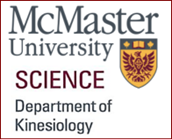- Home
- MURAnews
- Previous issues
- Spring 2017 - present
- Summer 2023
MURAnews Summer 2023
MURAnews Summer 2023 issue in PDF format / in accessible PDF format
In this issue:
Thanks to everyone who attended our events in June. First, we had a walk on some of the paths around Hamilton’s bayfront, with time to talk and some refreshment afterwards. It was interesting to see the developments planned and under construction in that area. The walks, in different venues, will continue over the summer and fall as long as there is interest. It is a great way to enjoy fresh air and good company. (Read more about MURA Walks below.) A BBQ lunch and conversation was on the menu when we gathered at the Phoenix the first week of June. Fortunately the weather held and we could relax on the patio. (If you haven’t been there, it is a super patio). It was wonderful to see old friends and colleagues after such a long period of only virtual events. Our June 14 AGM was held virtually, so that our members who live further away could more easily attend. This might be the model for future annual meetings. Please read more about the meeting in the next article. Our constitution requires us to hold a general meeting annually, and it is our official method of informing members about where we stand financially and what activities Council has been engaged in. It is also a good chance to connect with some people you know but haven’t seen for a while. Lastly, elections for vacant positions were held at the AGM. Many thanks to Betty Ann Levy, Nancy Gray, and John Horsman who completed their terms in June. A warm MURA welcome to new Council members Jane Mah and Virginia Aksan. I also look forward to working with our new Vice-President, Jan Nicholson, and with Diana Parker who was recently appointed as Treasurer by Council. A list of the 2023/2024 MURA Executive and Council is outlined below. As a council we work together to ensure that the needs of our members are met, and that we represent our members’ interests to the university. There are also many people who do not sit on council but who assist us in many ways. MURA could not function without them. Susan Birnie
News from MURA2023 MURA Annual General Meeting
MURA President, Susan Birnie, began her report by thanking everyone for attending. She said meeting virtually would be a good model for the future since it may allow more people to attend. She reviewed some of MURA Council’s work over the past year.
Susan gave credit to the members of this year’s Council, especially outgoing Councillors Betty Ann Levy, John Horsman and Nancy Gray, who each contributed in very meaningful ways over the course of their time on Council. We depend on the skills and talents of our members to have an effective Council. Treasurer Nancy Gray presented the Treasurer’s and Auditor’s Reports, MURA constitutional amendments were approved, and Past President Hank Jacek presented the Nominating Committee Report. The following slate of Executive and Councillors was elected, and the changes to the MURA Constitution outlined in the Spring edition of MURAnews were approved.
 Dr. Diana Sherifali, Associate Professor, School of Nursing and Heather M. Arthur Population Health Research Institute/Hamilton Health Sciences Chair in Inter-Professional Health Research gave a very interesting and useful presentation titled “Maintaining Good Health in Retirement”. Dr. Diana Sherifali, Associate Professor, School of Nursing and Heather M. Arthur Population Health Research Institute/Hamilton Health Sciences Chair in Inter-Professional Health Research gave a very interesting and useful presentation titled “Maintaining Good Health in Retirement”.
In her introduction, she noted that though chronic non-communicable diseases like dementia, stroke, diabetes and cardiovascular diseases are a leading cause of global mortality, 80% of these can be prevented by healthy eating, physical activity, tobacco cessation and limiting harmful use of alcohol. The research she presented focusses on ways of helping people implement healthy changes to their behaviour. She calls her favourite tool for this purpose the “Tiny Habits” approach. Tiny Habits for Better Health A tiny habit is a small health behaviour that: you design; you want to do; is quick (30 seconds to five minutes); does not require motivation; can be done easily; and can increase, multiply and spread. For example, if your health goal is to be more active
The ABC of tiny habits comprises: An Anchor, or call to action
The tiny Behaviour
An instant Celebration
Tiny habits work because they are designed for you by you, fit seamlessly into your routine, don’t require motivation, and build confidence and self-efficacy. If your first attempts don’t quite work for you, consider your ABC’s, reflect, redesign, and try again. Technology (e.g., FitBit, phone apps) can help to optimize your environment to prompt a habit. Two to three tiny habits are usually a good starter combination that can stick and can be stacked and grow. The key is to keep trying and staying positive. At the conclusion of the presentation, Susan thanked Diana, and presented her with a gift certificate to Indigo. There was a draw for two additional gift certificate door prizes, which were won by Richard Stubbs and Stephen Link. Brian Beckberger, MURA’s delegate to the Salaried Pension Trust Committee, reviewed the year’s activity in the salaried pension plan, and gave an overview of an asset/liability study that took place over the last year. His written report is available on the MURA website. Welcome New Council Members!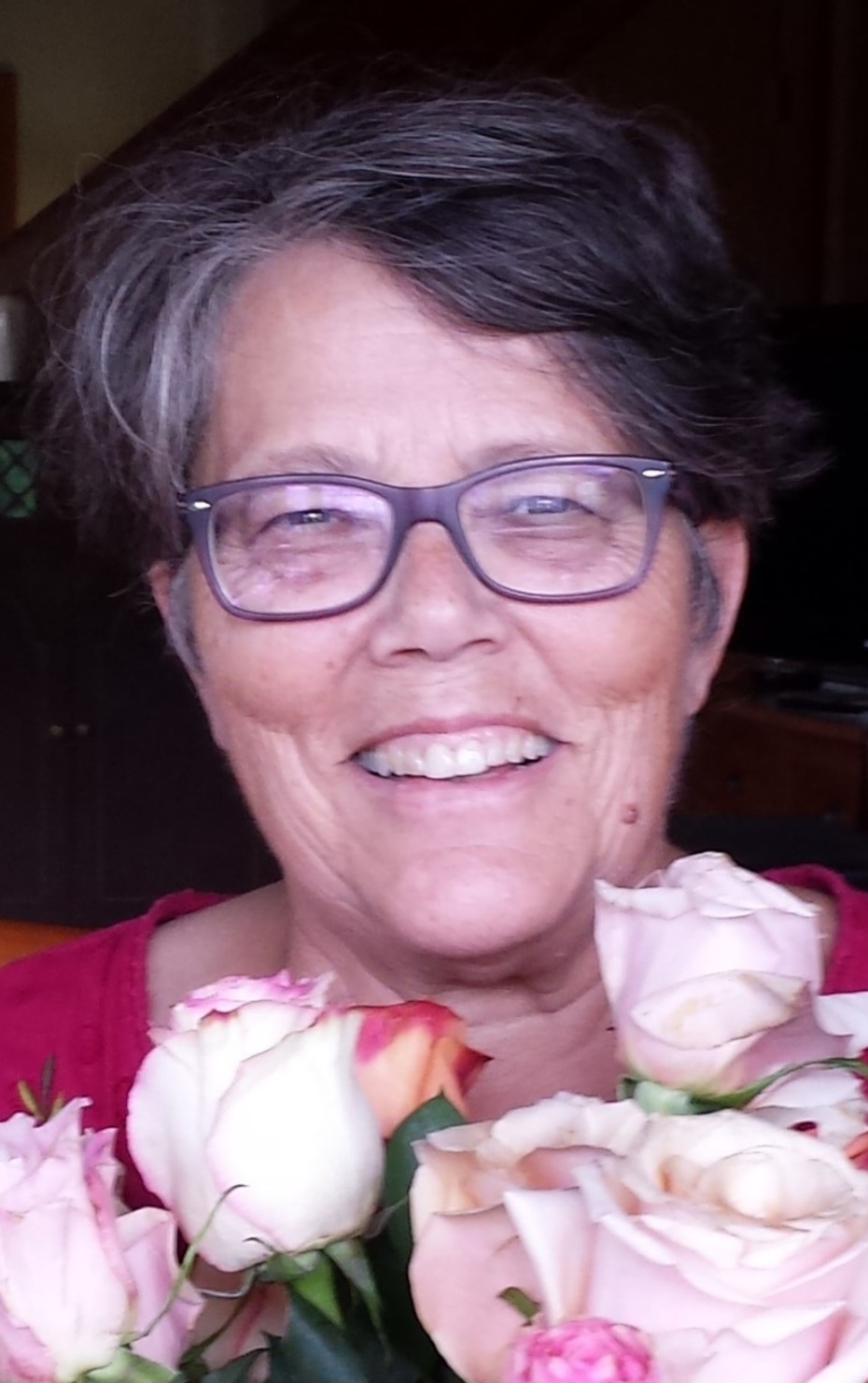 Virginia H. Aksan Virginia H. Aksan- I began my journey as a dual citizen – Canadian-American – in 1982, when Oktay Aksan, my black-eyed Turk, carried me off to Toronto. There, he gave me a choice – go back for the PhD or continue to work in libraries. I did both. I enrolled in an MA and then the PhD program in Middle East studies at the University of Toronto, a decade after doing a library degree at Berkeley (1973) and almost two decades after graduating from Allegheny College with a BA in French (1968). While writing the PhD, I worked at Robarts Library, in charge of cataloguing the Middle Eastern accessions. I was appointed to the McMaster History Department in the fall of 1991 where I had the great privilege to teach until I retired in 2014, mainly classes in Ottoman, Islamic, Middle Eastern and Mediterranean history. I taught modern Middle East history (more accurately the Arab-Israeli question) a dozen times.
On campus, I served as Chair of History (1999-2006); on McMaster’s Senate (1992-94), on the University Planning Committee (1999-2002), the Board of Governors (2005-08), and as President of the McMaster University Faculty Association (2010-11). Retirement activities include singing and bird watching, both lifelong pleasures, and serving on the Board of the remarkable Hamilton Children’s Choir.
In 1988, I returned to full-time work in the Faculty of Engineering where I had a number of different positions in various departments over 30 years. In 2013 when Mosaic arrived, I was involved in the implementation of the travel and accounts payable finance module. For more than 20 years, I worked as an Administrator for both Materials Engineering and Biomedical Engineering. I retired in 2021 and stayed on part-time until finally leaving at the end of September 2022. My first granddaughter arrived in 2020, a grandson in 2021, and then I was blessed with twins - a boy and a girl - in 2022. I’m enjoying my time with these kiddos, spending time at the cottage, and I love to quilt in my spare time (which I don’t seem to have enough of!).
courtesy of Rose Anne Prevec Welcome New RetireesCompiled by Kathy Overholt Sue Becker, Psychology, Neuroscience and Behaviour Retirees in the NewsBy Marcia MacAulay Fred Moyes, retiree and former McMaster professor, was recognized with an honorary degree at the McMaster Faculty of Science convocation on June 15. Moyes has had an illustrious career in both the academic and musical worlds, with his passion and enthusiasm for teaching positively impacting thousands of students across the globe. Moyes taught anatomy in the Physical Education and Kinesiology programs at McMaster University, twice earning the McMaster University Teaching Award. His musical career as a singer/songwriter and composer has seen him perform around the world. He earned the Royal Scottish Country Dance Society Scroll of Honour, and served as president of the Robert Burns Society of Hamilton. See the Daily News article Meet McMaster’s Spring 2023 honorary degree recipients. Best Canadian Scientists from McMaster Several McMaster University retirees have ranked in the top 100 scientists in Canada in their field in the recently released Research.com ranking. Michael Boyle, professor emeritus in the Department of Psychiatry: Boyle’s research “mostly deals with Psychiatry, Mental health, Conduct disorder, El Niño and Developmental psychology.” https://research.com/u/michael-h-boyle David Feeny, professor emeritus in the Department of Economics: Feeny’s “main research concerns Quality of life, Health Utilities Index, Physical therapy, Public health and Gerontology.” https://research.com/u/david-feeny Mary Law, professor emerita in the School of Nursing: Law’s “primary areas of study are Occupational therapy, Developmental psychology, Activities of daily living, Cerebral palsy and Nursing.” https://research.com/u/mary-law
Henry Schwarcz, professor emeritus in the School of Earth, Environment & Society: Schwarcz’s “primary scientific interests are in Mineralogy, Paleontology, Ecology, Archaeology and Isotopes of carbon.” https://research.com/u/henry-p-schwarcz
Order of Canada AppointmentsTwo McMaster professors emeriti were recognized by the Governor General of Canada in June as new recipients of the Order of Canada. One of our country’s highest civilian honours, the Order of Canada recognizes outstanding achievement, dedication to the community, and contributions to the nation. Rhoda E. Howard-Hassmann, professor emerita of Sociology, was appointed a Member of the Order for her extensive scholarly contributions and steadfast commitment to the advancement of international human rights. Gary R. Purdy, professor emeritus of Materials Science and Engineering, was appointed a Member of the Order for his innovative contributions to the field of materials science and engineering, and for his dedicated support for refugees, peace efforts and social justice. Learn more about these recipients and other McMaster community members who were appointed to the Order of Canada recently via the Daily News article McMaster Chancellor Santee Smith, professors and community members appointed to Order of Canada. Recent PassingsCompiled by Kathy Overholt Robert Bell, Facility Services, April 9, 2023 SPRING FLINGOnce the nice weather arrived, it seemed we all wanted to get going. On Tuesday, June 6, we held the first MURA Spring Fling at the Phoenix patio. It was a beautiful day – 40 people came out and visited with old and new friends. Thank you to the President’s office for providing a subsidy. Donations for door prizes were provided by the Phoenix (2 - $25 gift certificates); by Vineland Estates Winery (2 bottles of wine); by Emily Gauld (handmade pottery bowl) and by Rob Stevens (cutting board and wooden spoons). Thank you to these donors. The winners seemed pleased with their gifts.
MURA WALKSSince walking seems to have become more popular among the retirees, we are now organizing monthly walks at a variety of places. The first was held on Wednesday, May 17 when 12 people gathered at Pier 8 park at Williams Café and went for a walk. Some went around the circuit along the waterfront trail to the Haida and back to Williams. Other more adventurous souls walked over to Bayfront Park and then joined in for a coffee.The second walk was held on June 16 in Chippawa (Niagara Falls) at Kingsbridge Park. Five adults and a two-year-old walked from the park at the top of the Falls, all the way down to Table Rock House. We walked at a leisurely pace and it was a beautiful day. Lunch followed at the well-known Betty’s restaurant.
Our third walk was scheduled for July 20 for a tour of the McMaster campus, with lunch to follow at the Phoenix for those who were interested.
Future walks currently planned are: MONDAY AUGUST 14: THURSDAY SEPTEMBER 14: Watch your emails for information. Or send me a message and I will add you to my personal list of walkers! The more the merrier – spouses and friends are welcome. Hope to have you join us sometime. Walks in November and December will also be planned – suggestions are welcome. Contact me at gauld@mcmaster.ca.

MURA Scholarship NewsThe McMaster University Retirees Association In-Course Scholarship is given to a full-time student enrolled in Level 2 or above of a program in Aging and Society. Tegan Wilson won the MURA In-course Scholarship in Fall 2022, and has asked that we pass along her thanks to members. Her message appears below. Who am I?… My accomplishments... My aspirations… Kind Regards,
|
Contacting Human ResourcesMail Gilmour Hall 304, McMaster University 1280 Main Street West, Hamilton, ON L8S 4L8 Phone 905-525-9140, extension 22247 Email hr.mcmaster@mcmaster.ca Website https://hr.mcmaster.ca/retirees/ |
Members' Corner
The views and opinions expressed in Members’ Corner are those of the authors and do not necessarily reflect the official policy or position of MURA Council.
Chimneys: Dundas and Prague
By Elaine McKinnon Riehm, Faculty of Humanities, Eighteenth-Century Studies
Dundas has convenient benches along King Street that allow sitters a view of both the passing scene and the city’s nineteenth-century past. Looking up, you will see charming friezes and windows outlined in ornamental brick. If you bend your neck a little and look farther up, you will see chimneys of every sort, four-flued chimneys on store rooftops, indicating four fireplaces below in what formerly were dining or drawing rooms or shops. On one roof top, I found 5 chimneys with a total of 11 flues. But if you sweep your eyes farther up and around, you will discover the serious, tall, industrial chimneys of Dundas.
I suppose that together all these chimneys served to disperse into the atmosphere the noxious air from city factories and workshops on the expectation that prevailing winds would carry airborne particles to outlying areas such as Copetown or Greensville, whose residents and livestock might not object to the soot.
Made of brick from the numerous Dundas brickyards that used pools of local clay for their bricks, chimneys provided employment in the nineteenth century for brick-makers, agile bricklayers, draftsmen, and for horses and drays. Once built, chimneys of every kind required maintenance to avoid catastrophic chimney fires, which were a serious household and town hazard. This was the job of the lowly chimney sweep.
Chimney sweeps, often as young as fourteen, were chosen for their slim girth. They climbed chimneys and descended into them on ropes where they scoured the interior walls with a circular wire brush and scraped off charcoal and carbon debris. It was a dangerous job, often resulting in early death.
In 1775, Percivall Pott, a British surgeon, reported a form of occupational cancer that he had noticed among chimney sweeps. Known as Chimney Sweeps’ Carcinoma or soot wart, it is a squamous cell cancer of the skin of the scrotum caused by soot irritation, leading to a cancerous invasion of the abdomen with a high mortality rate. Curiously, there was almost no soot wart in France, where sweeps wore tunics that hung outside their work pants and prevented soot from getting into their underwear. Pott’s observations are thought to be the first medical documentation of an occupational disease.
We have no record of soot wart in Dundas, nor do census reports reveal the number of chimney sweeps here. The City Directory of Hamilton Wentworth (1865-66), which lists residents by name and occupation, makes no mention of chimney sweeps, suggesting that they were perhaps lumped together with other unskilled labourers.
The large number of surviving chimneys, however, tells us there were many young sweeps in Dundas.
The chimneys I saw recently in Prague are, to mix a metaphor, a different kettle of fish than those in Dundas. Prague chimneys are confections: strips of sweet yeast dough, wrapped around a stick, grilled over charcoal, slipped off the stick, and sprinkled with cinnamon and sugar. They are perhaps the ultimate street food. Eaten in warm tufts pulled from the edges, chimney cakes are fun to share with a friend over coffee. Alternatively, their hollow interior can be filled with scoops of ice cream.
In Prague, these cakes are known as “trdelnik.” As there are similar cakes eaten on the streets of Vienna and Budapest, there is some controversy about where they originated. If in the Czech Republic, were the inventors Czech, Slovak, or perhaps Moravian? No matter. Surely some time, on some Slavic farm, a farm wife noticed that the coals were still hot and strung a lump of left over, sweet, bread dough onto a stick which she then toasted over the fire.
The tallest chimney cake I saw in Prague was in the hands of a child, who looked about 3. He was balancing an ice-cream-filled chimney while seated jauntily on the shoulders of his lengthy father, whom I estimate at 6 ft. 3 in. From the low bench where I was sitting. I could not determine whether the chocolate ice cream did or did not drip onto his father’s head.
In Praise of Walking
By Ellen Ryan, Psychiatry
When you are walking in the springtime or at dawn, you are watchful, alert, mind stretched towards the rising day, and nothing matters but that slow affirmation.I became a walker thirty years ago. Initially, I walked every day - around the block with a cane to strengthen an injured right ankle. After six weeks, the ankle was healed. I was left with a cherished habit.
~ Henry David Thoreau
Walk lightly on the Earth, and the long road turns to joy.
~ Thich Nhat Hanh
To solve a problem, walk around.
~ St. Augustine
Even a twenty-minute walk is long enough to fling open the inner door to insight and inspiration.
~ Julia Cameron
In the course of a walk, we usually find out something about our companion, and this is true even when we travel alone.
~ Thomas A. Clark
Perhaps the truth depends on a walk around the lake.
~ Wallace Stevens
I have kept walking since, different reasons prominent at different times. During the pandemic, Patrick and I walked twice a day for outdoor exercise and companionship. Eventually, we mapped out walks to cover most of the Ancaster and Dundas neighbourhoods. The best surprises during these neighbourhood walks occurred when we discovered walkways connecting two cul-de-sacs, allowing us to cover new territory without doubling.
This morning I walked with sun shining over my shoulder, a gentle breeze tickling my cheeks,
swaying branch shadows following my own shadow on the rail trail. I could hear the crunch of feet pacing on the gravel, sometimes only mine, sometimes a chorus of feet, sometimes accompanied by the creek babbling.
While walking outdoors, I feel most comfortable in my body, breathing deeply with the rhythm of legs and arms, on my way, with no important destination. I can practice mindfulness, paying attention, often with my camera, to moment by moment all the path. Grateful thoughts flow naturally.
An added blessing of daily walks is the boost to creativity, long recognized by writers and artists.
Isn’t it wonderful that walking is also good for our health? See the recent blog below from McMaster Optimal Health on the health benefits and follow-up resources.
Resources
- Gros, Frederic. (2014). A Philosophy of Walking. HarperBooks.
- McMaster Optimal Health (2023). Walking for Good Health (an informative blog).
- Nicholson, Geoff. (2009). The Lost Art of Walking: The History, Science, and Literature of Pedestrianism. Riverhead Books.
A Joyful Habit
By Rose Anne Prevec, McMaster Museum of Art
This year, my cartoons resulted in two books, significant sales, an exhibition, and a lot of laughs. Retirement’s busier than I expected!
During my career spent promoting the work of weighty, world-class artists at the McMaster Museum of Art, there never seemed like a good time to whip out a stash of my cartoons and say, “Look at these things I made.” My doodles were private, shared only on birthday and Christmas cards to close friends and family. That changed in 2020.
I began deliberate, daily cartooning as a personal challenge to find something to smile about after the loss of my father (McMaster Biology Professor, Ludvik Prevec) and the onset of the global pandemic. That exercise became a joyful habit.
For me, gag cartooning is a perfect marriage of skills that I acquired at McMaster. From Art, I learned drawing and composition. From Marketing, I learned to condense big ideas into ten-word captions. From Creative Writing, I developed a love of word play. And let’s not forget those Excel Spreadsheet skills that help me keep track of hundreds of cartoons circulating to multiple publications at any one time.
When I am stuck, my favourite brainstorming technique is also something I learned at McMaster in a Marketing Class on Design Thinking. The technique is called “worst possible ideas” and it is a guaranteed way of loosening up and thinking of something unexpected, e.g. What is the worst thing you can do when you’re face-to-face with a dragon? Look at your phone. What is the worst thing you could do if you prefer wool to synthetics? Immerse yourself in live sheep. It gives me the freedom to be ridiculous.
 The first cartoons I shared online under the name Groundhog Hill, were India ink on paper drawings featuring animals that I encountered while hiking the Dundas Valley trails. I’m more than a little obsessed with wildlife, even the ones that raid my green bin, and love learning about their habits and behaviours. In some cases, I use cartoons to share surprising facts, e.g. opossums sleep for 18 hours a day, the Fibonacci sequence is observed in snail shells, baby groundhogs are sometimes called “chucklings” (how perfect is that for a cartoon?) Generally, however, I try to combine aspects of nature with broader, relatable human concerns like anxiety, business etiquette, and a love of ice cream.
The first cartoons I shared online under the name Groundhog Hill, were India ink on paper drawings featuring animals that I encountered while hiking the Dundas Valley trails. I’m more than a little obsessed with wildlife, even the ones that raid my green bin, and love learning about their habits and behaviours. In some cases, I use cartoons to share surprising facts, e.g. opossums sleep for 18 hours a day, the Fibonacci sequence is observed in snail shells, baby groundhogs are sometimes called “chucklings” (how perfect is that for a cartoon?) Generally, however, I try to combine aspects of nature with broader, relatable human concerns like anxiety, business etiquette, and a love of ice cream.
I was delighted by the response I received on Instagram, where I also found a generous, supportive global community of cartoonists. Through them, I was introduced to Amy Kurzweil, a New Yorker cartoonist who leads online classes. These have been fun and enormously helpful. I’ve learned about great gag cartoonists, made connections, and gotten tips about all aspects of cartooning, from generating ideas to finding publishers.

An unexpected benefit was the invitation to be in a book with eleven accomplished cartoonists. We are scattered around the world from California to Singapore, but it has been wonderful to talk, learn, and celebrate successes with others in this strange business, where actual publication is rare and rejection is the norm. The book Hold That Thought: 12 Cartoonists on Their Worlds of Humor, was released in June and there will be a launch in Massachusetts in November. I can’t wait to meet all the artists in person.

Locally, an exhibition of my original cartoon drawings will be presented at the Carnegie Gallery in Dundas from September 8 – October 1, 2023. A new book of my cartoons Chucklings: Cartoons from Groundhog Hill will be published in late August to complement the show.
Finally, I should add that my cartoon cast has expanded to include more peculiar creatures—humans. These cartoons have sold to a variety of magazines, notably Airmail, Alta Journal, Narrative, Reader’s Digest, The Wall Street Journal, and the Weekly Humorist. Some are pending publication. The waiting is excruciating, but exciting too!
I’m grateful to MURA editors for being early adopters and sharing my cartoons in this publication.
Rose Anne Prevec’s website is https://www.groundhoghill.ca and her cartoons are posted regularly on Instagram @groundhog_hill.

courtesy of Humour is Contagious

courtesy of Meanwhile in Canada

courtesy of Humour is Contagious
|
MURAnews is produced by MURA members Denise Anderson (Production Editor), Sylvia Avery, Helen Barton (News Editor), Nora Gaskin, John Horsman, and Marcia MacAulay. We welcome submissions from MURA members. Contributing writers: Mary Johnston, and Kathy Overholt. |
© 2025 McMaster University Retirees Association | Having trouble with this site? Contact our Webmaster. |
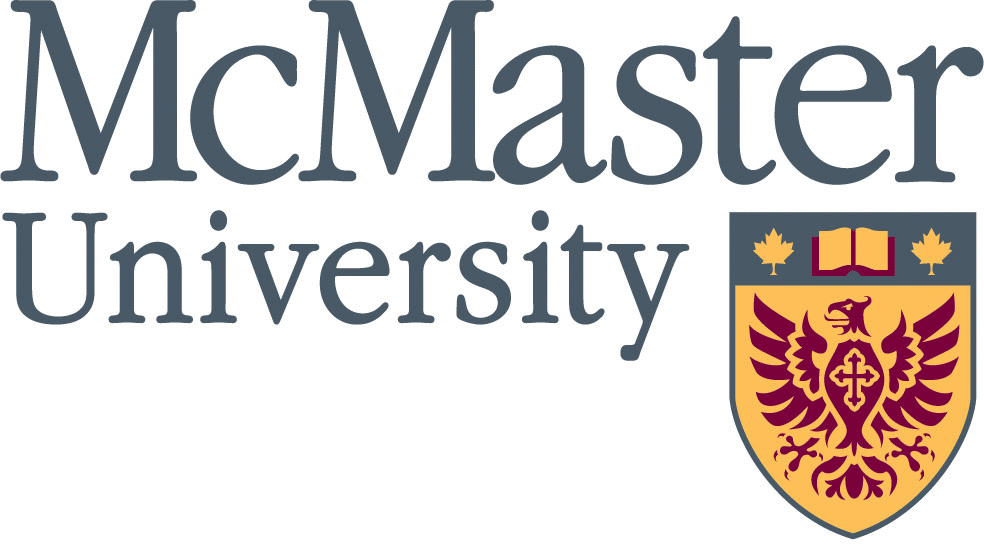
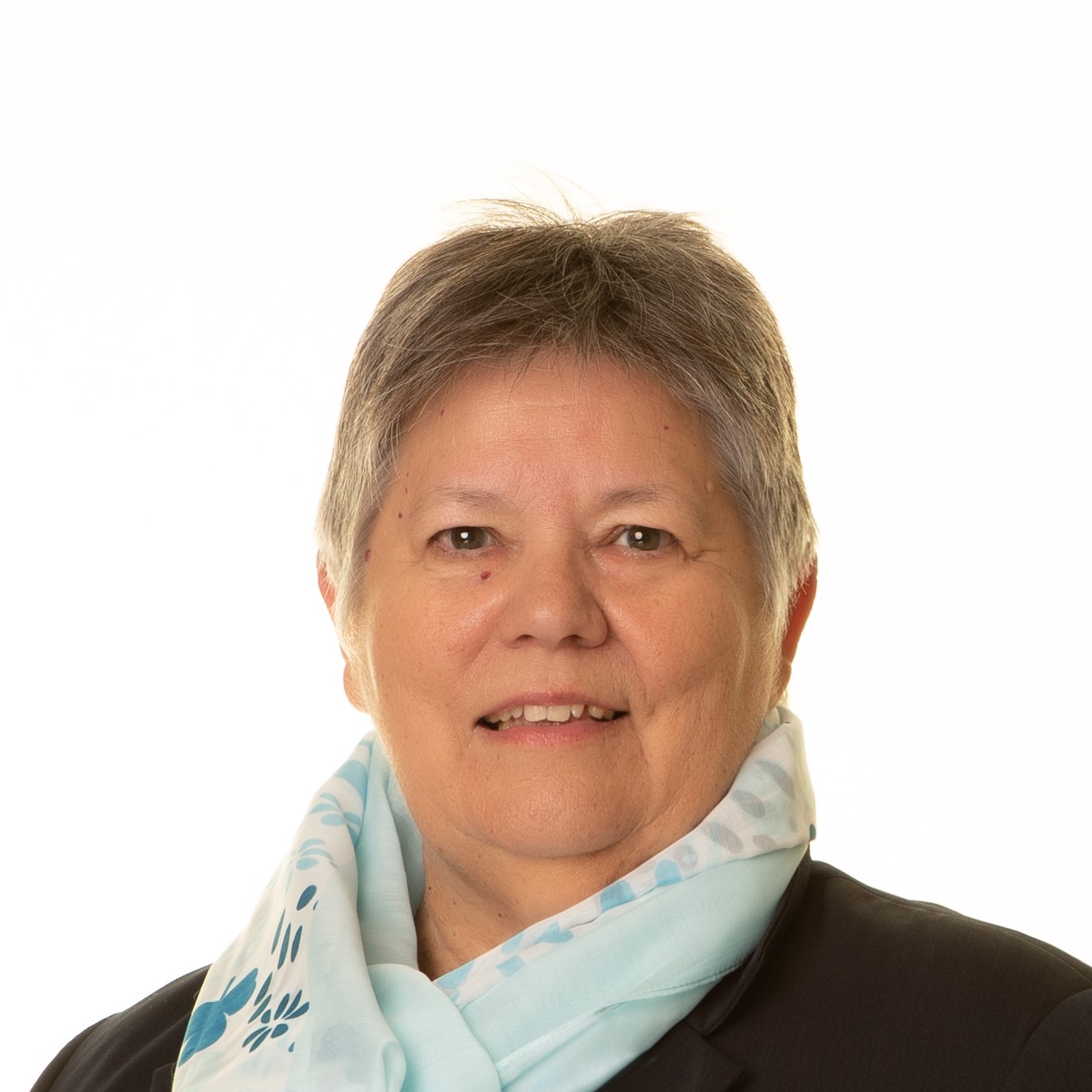
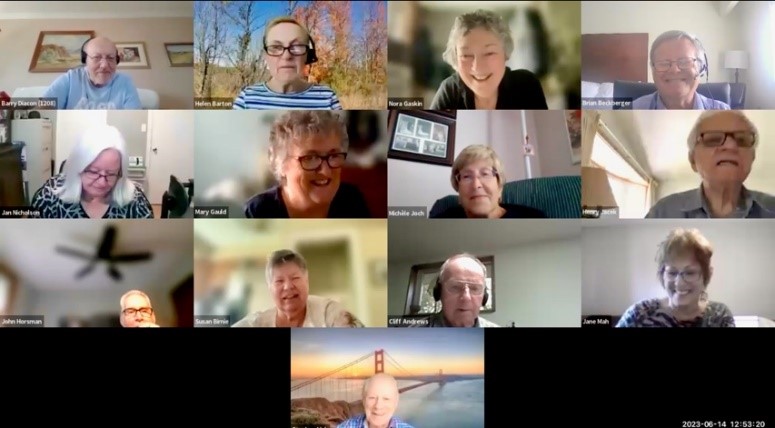 The 38th MURA annual general meeting on June 14 was the fourth AGM to take place via Zoom. Participants enjoyed 15 minutes of social time before the meeting got underway. Peak attendance at the meeting reached 38.
The 38th MURA annual general meeting on June 14 was the fourth AGM to take place via Zoom. Participants enjoyed 15 minutes of social time before the meeting got underway. Peak attendance at the meeting reached 38.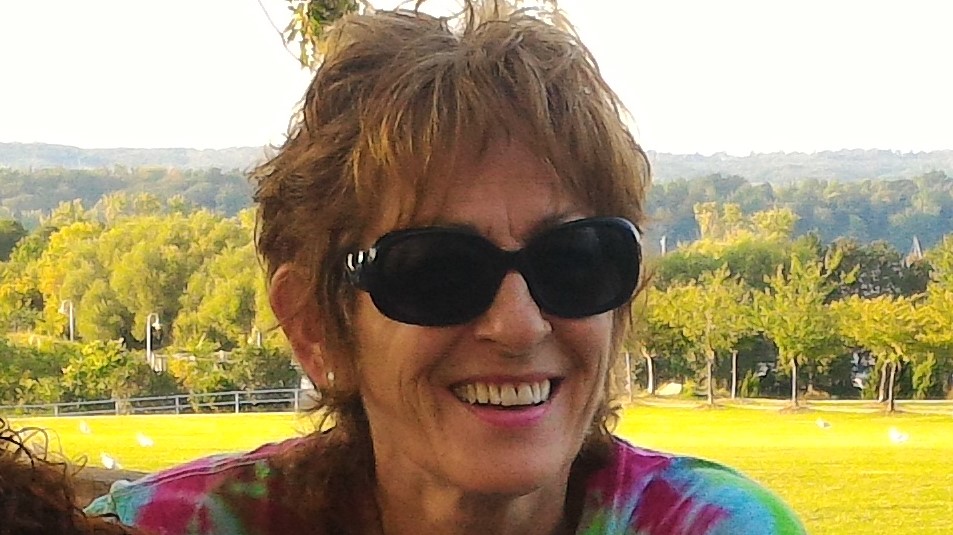 Jane Mah - I started at McMaster University in 1983 after 7 years with the Hamilton Spectator. I started in a part-time role in Religious Studies as an Administrative Assistant, knowing that I intended to start my family. My oldest son Tyler currently works for Media Production Services (MPS) at Mac and my youngest Trever, is with the Registrar’s Office.
Jane Mah - I started at McMaster University in 1983 after 7 years with the Hamilton Spectator. I started in a part-time role in Religious Studies as an Administrative Assistant, knowing that I intended to start my family. My oldest son Tyler currently works for Media Production Services (MPS) at Mac and my youngest Trever, is with the Registrar’s Office.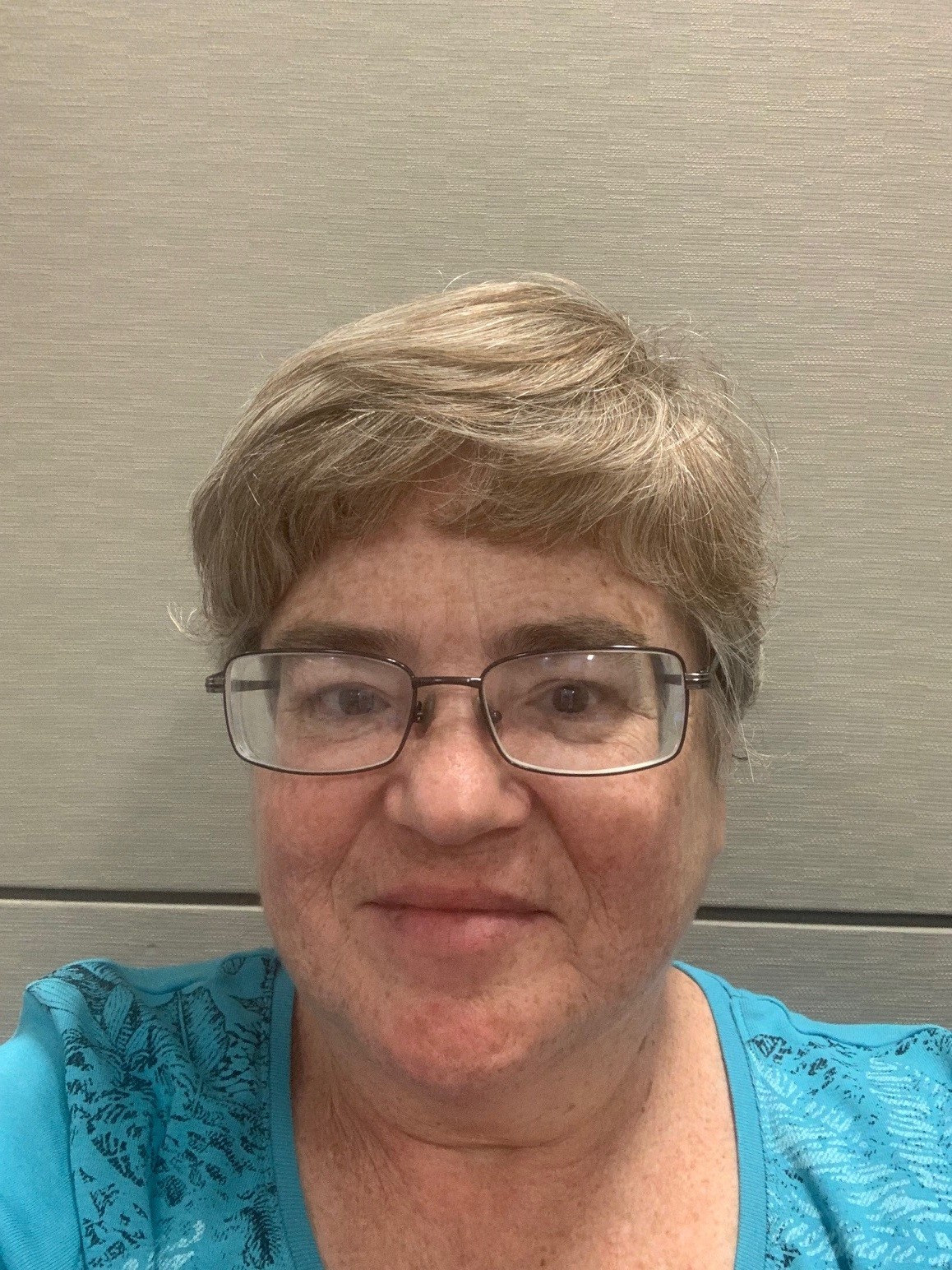 Diana Parker - Starting in Security and Parking Services, with a stop in Financial Affairs, Diana spent the last 12 years of her McMaster career in the Office of the Vice-President Administration where she worked on a number of process-improvement projects with Finance, Human Resources, Facility Services and University Technology Services (UTS). She retired in December of 2022 from the Office of the Vice-President Finance and Operations. Along the way, Diana served on the Central Health and Safety committee, was a Treasurer for MUSA, and a student mentor through McMaster Toastmasters.
Diana Parker - Starting in Security and Parking Services, with a stop in Financial Affairs, Diana spent the last 12 years of her McMaster career in the Office of the Vice-President Administration where she worked on a number of process-improvement projects with Finance, Human Resources, Facility Services and University Technology Services (UTS). She retired in December of 2022 from the Office of the Vice-President Finance and Operations. Along the way, Diana served on the Central Health and Safety committee, was a Treasurer for MUSA, and a student mentor through McMaster Toastmasters.
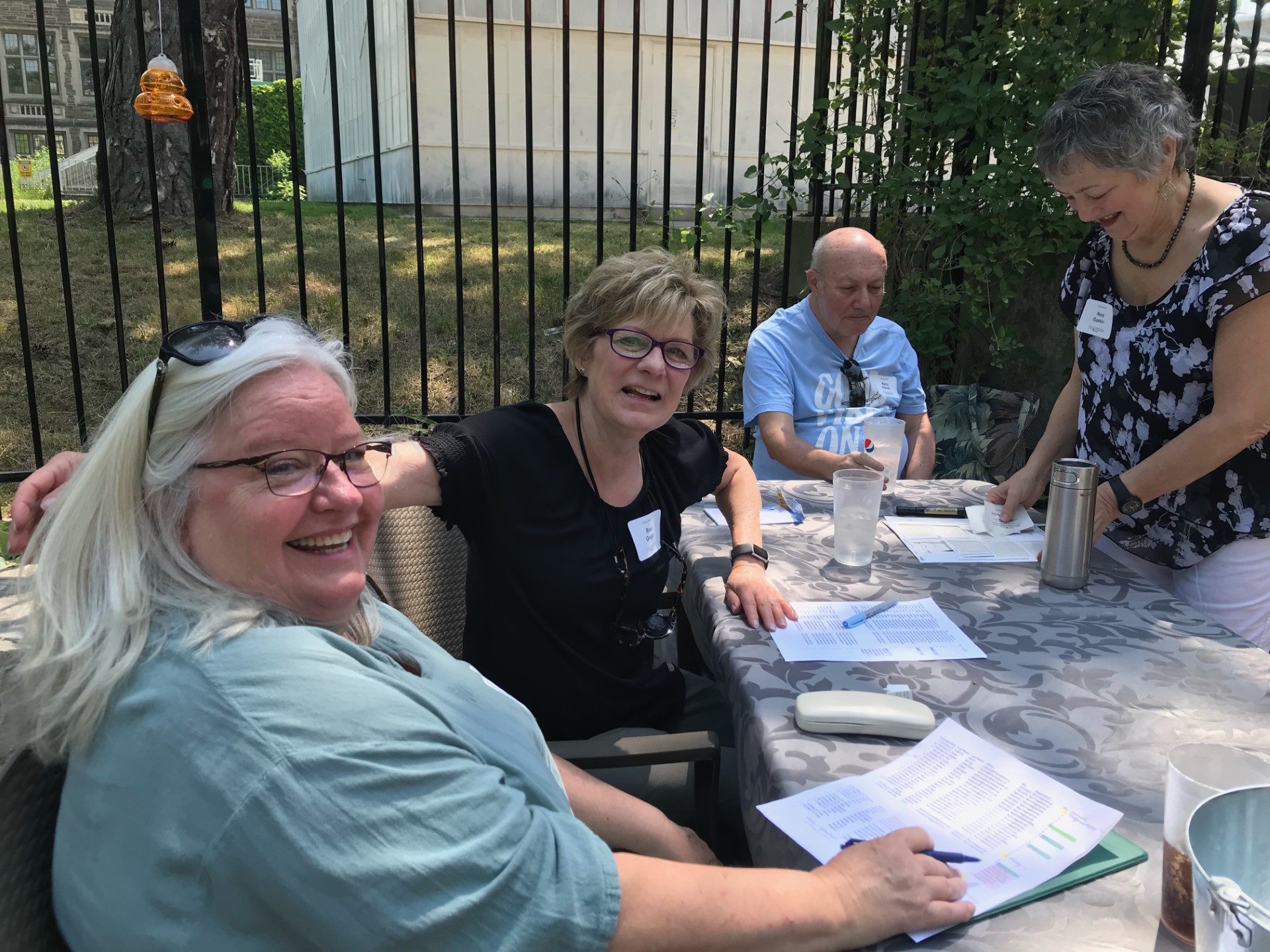
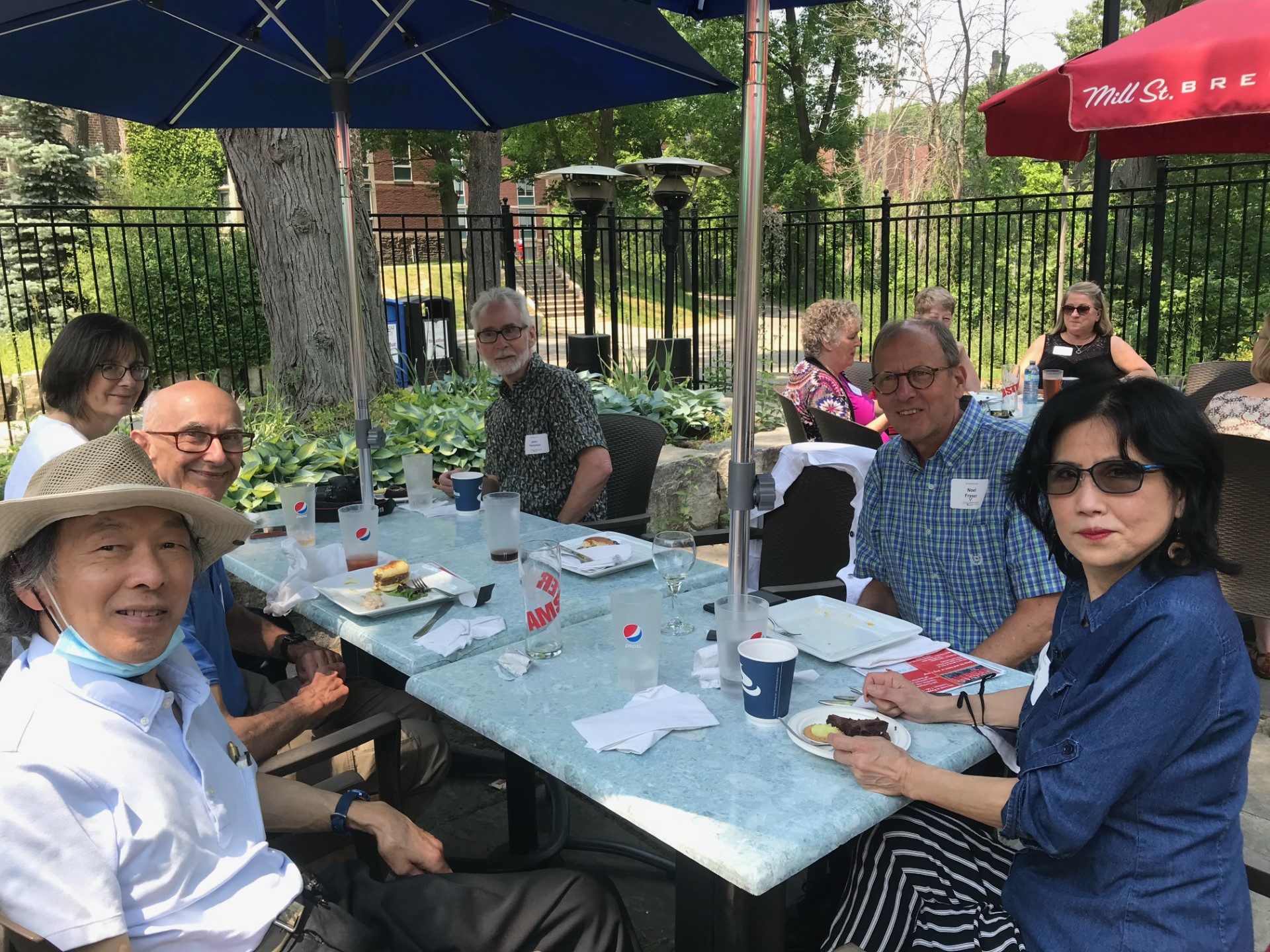
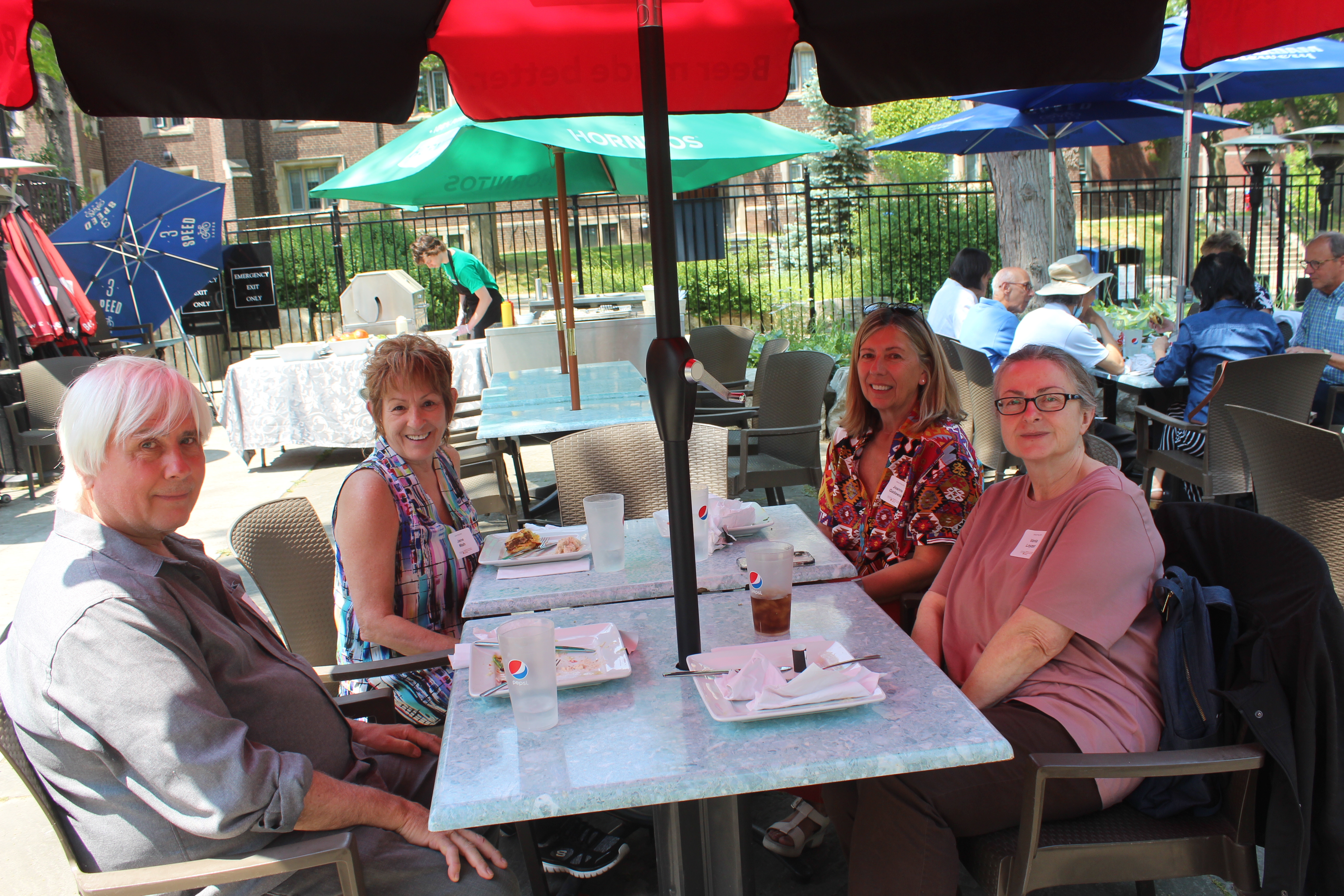
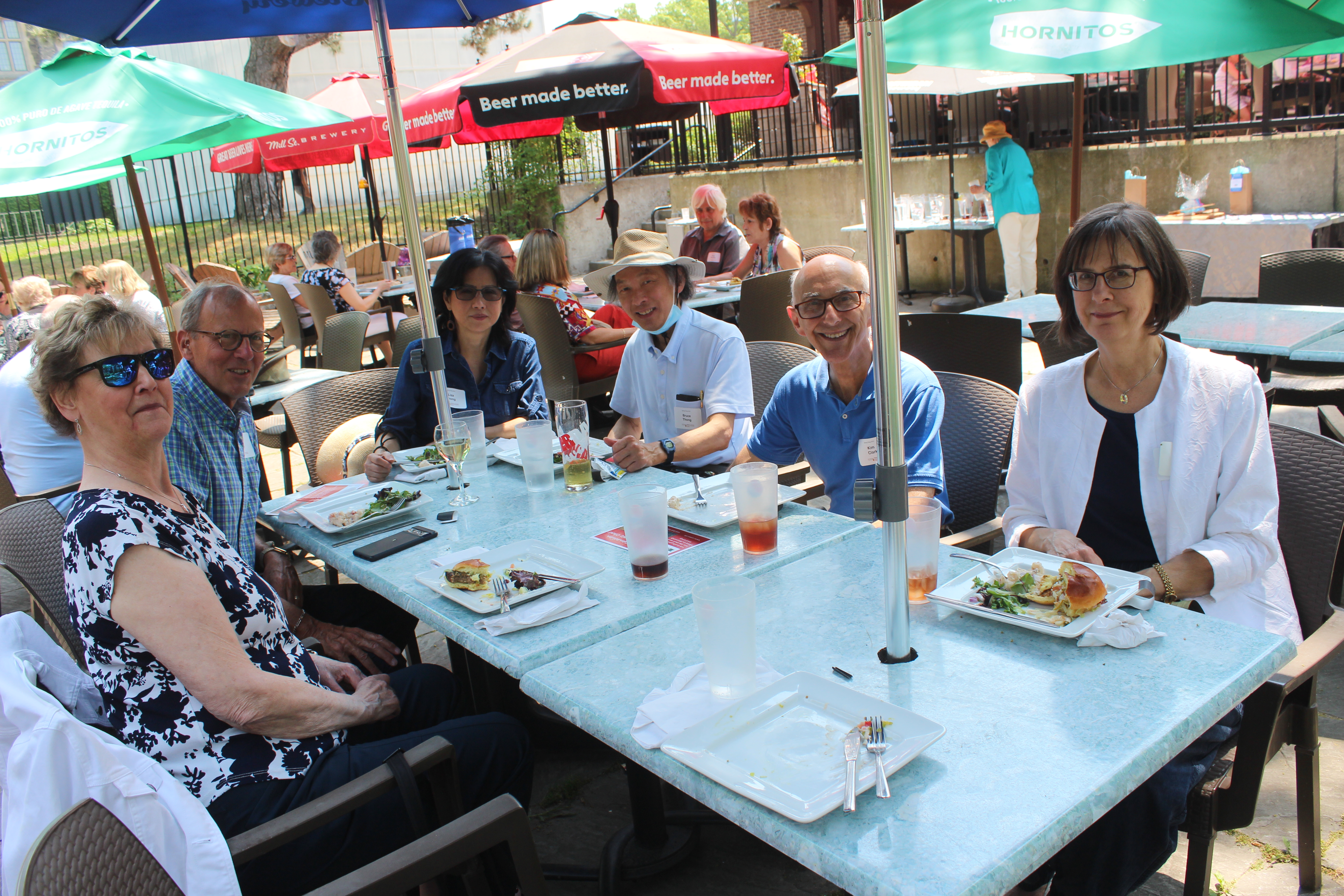
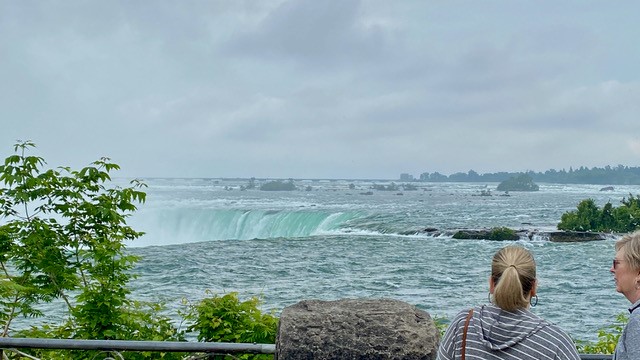
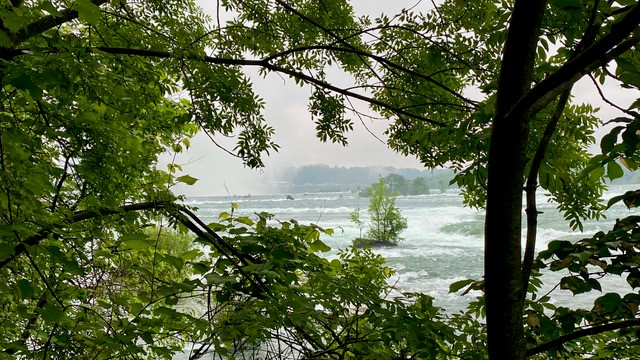
 MURA Holiday Lunch
MURA Holiday Lunch

